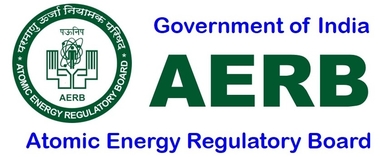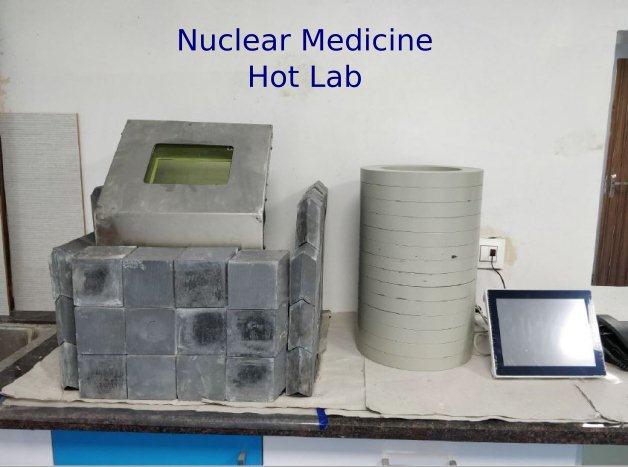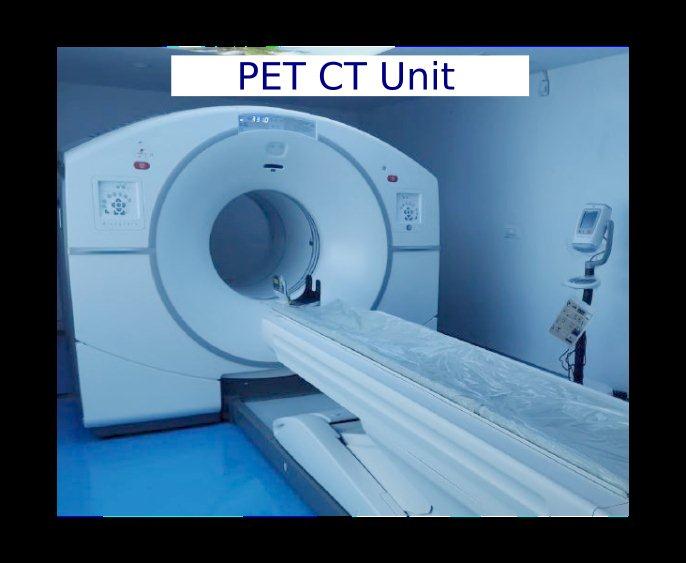Nuclear Medicine
Nuclear Medicine is the speciality that utilises unsealed radioisotopes in the form of radio-pharmaceuticals to investigate disorders of anatomy, physiology and patho-physiology for diagnosis and/or treatment of diseases. Nuclear Medicine procedures are used for diagnosis/treatment of many types of cancers, cardiac disease, endocrine & neurological disorders, etc.
Nuclear medicine imaging has special importance as it can detect the molecular level activity within the body which helps in identification of disease in its earliest stage and the metastasis growth in cancer.
In Nuclear Medicine procedure, the radio-pharmaceutical is injected in to blood stream or swallowed by the patient. The physiological nature of area being examined allows the accumulation of radio-pharmaceutical at the examination area. For diagnosis purpose, the gamma rays emitted from the radio isotope are detected by special detection devices (e.g. Gamma Camera, SPECT, PET) and images are reconstructed using computer algorithms. Radioisotopes such as Tc-99m, F-18, Tl-201, Ga-67 and Ga-68 are commonly used for diagnostic purpose. For therapeutic purpose, beta emitting radioisotopes are used which deliver localised radiation dose once radio-pharmaceutical accumulates at the area of interest. Radioisotopes such as I-131, Lu-177, Sm-153, Y-90, P-32 and Re-188 are commonly used for therapy.
In Nuclear Medicine procedure, the radio-pharmaceutical is injected in to blood stream or swallowed by the patient. The physiological nature of area being examined allows the accumulation of radio-pharmaceutical at the examination area. For diagnosis purpose, the gamma rays emitted from the radio isotope are detected by special detection devices (e.g. Gamma Camera, SPECT, PET) and images are reconstructed using computer algorithms. Radioisotopes such as Tc-99m, F-18, Tl-201, Ga-67 and Ga-68 are commonly used for diagnostic purpose. For therapeutic purpose, beta emitting radioisotopes are used which deliver localised radiation dose once radio-pharmaceutical accumulates at the area of interest. Radioisotopes such as I-131, Lu-177, Sm-153, Y-90, P-32 and Re-188 are commonly used for therapy.
Radioisotopes in unsealed form used to carry out diagnostic and therapeutic operations in nuclear medicine practices have a potential for radiation contamination and exposure. Therefore, adequate care in ensuring safe handling of radioisotopes is required to be taken while carrying out Nuclear Medicine procedures.
To establish and operate a Nuclear Medicine Facility, the user institute is advised to go through the regulatory requirements as mentioned in the AERB Safety Code for Nuclear Medicine Facilities, AERB/RF-SC/MED-2(Rev.2), 2011 and Atomic Energy (Radiation Protection) Rules, 2004 and shall obtain requisite regulatory consent through AERB’s web-based system eLORA.
More details of radioisotopes used in Nuclear Medicine
Information Related to Regulation for Nuclear Medicine Facilities
Nuclear Medicine Facilities
- Regulatory Requirements and Guidelines for new Nuclear Medicine Facility
- Guidelines on regulatory application form submission
- List of Nuclear Medicine Facilities licensed by AERB
- Procedure for approval as RSO for high dose therapy facilities in NM and NMFs authorised for providing field training on radiological safety aspects for High Dose Therapy Facilities
- Radiation Emergency in Nuclear Medicine and Preparedness
- Procedure for Safe Handling of Cadavers with Radionuclides
Personnel Monitoring Services Providers (TLD)
- TLD badges
- Proper Usages of TLD Badges
- Personnel monitoring of radiation workers in radiation facilities
Regulatory Documents









